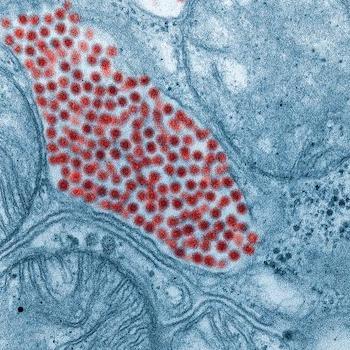Mosquitoes suck, both literally and figuratively. No other animal on Earth is responsible for more human deaths than the lowly mosquito.
According to MacLean's, "The general consensus of demographers is that about 108 billion human beings have ever lived, and that mosquito-borne diseases have killed close to half—52 billion people, the majority of them young children." That makes mosquitoes, by far, the world's deadliest animal.*
That's probably why mosquito-borne illnesses always get a lot of press coverage. In the United States, the little bloodsuckers are responsible for outbreaks of West Nile virus and Zika virus, among others. Now, Eastern Equine Encephalitis (EEE or Triple E) is the latest to cause public concern.
EEE isn't new. An article in the American Journal of Tropical Medicine and Hygiene says that, from 2003 to 2016, a total of 121 human cases were reported, for an average of roughly 8 or 9 per year. So, the disease is extremely rare, but those unlucky enough to contract it don't have a happy prognosis because the virus can cause fatal brain inflammation. Overall, about 40% of patients will die.
 As is often the case, the people who are most vulnerable are either very young or very old. While the overall incidence rate of neuroinvasive EEE is 3 per 100 million Americans, the incidence rate among children younger than 5 years is ~6 per 100 million and among people aged 70 years and older is ~7 per 100 million.
As is often the case, the people who are most vulnerable are either very young or very old. While the overall incidence rate of neuroinvasive EEE is 3 per 100 million Americans, the incidence rate among children younger than 5 years is ~6 per 100 million and among people aged 70 years and older is ~7 per 100 million.
(To put the rarity of this disease into perspective, the incidence rate of fatal car accidents is 12,400 per 100 million. That means you are 4,133 times more likely to die in a car accident than to die from EEE.)
Why Is an EEE Virus Outbreak Happening?
Why are there so many EEE cases this year? An article by Yasemin Saplakoglu in LiveScience explains that virus-infected, swamp-dwelling birds migrate up from Florida and take residence in New England. (Both areas serve as the epicenter for EEE cases.) Infected birds aren't killed but develop immunity. However, younger birds aren't immune, and when a young bird gets sick, the virus can be transmitted. Mosquitoes that feed on birds sometimes feed on humans, spreading the virus to us. This, along with the introduction of new strains of EEE, create a cycle in which larger human outbreaks occur every decade or two.
Another factor likely at play is a person's immunogenetics. For reasons that remain unknown, some people are more susceptible to certain types of infectious disease. In fact, the biggest mystery in medical microbiology is why microbes kill some people but not others. I believe the answer will be found in obscure genetic mutations. For instance, evidence indicates that some people are genetically more susceptible to influenza infection than others.
From a public health perspective, there isn't much to recommend. People should not fear EEE. Those who want to take extra precautions could use insect repellent, wear long clothes, and avoid being outside when mosquitoes are most active, usually from dusk to dawn.
*Update on 3-Oct-2019 @ 1:02 pm PST: These numbers are often repeated but not well justified. A more realistic number is that 5% of all human deaths were due to mosquitoes, according to RealClearScience.




